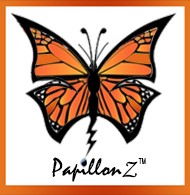
IT IS NOT JUST DURING THE FIRST SIX WEEKS OF SCHOOL!!!!
The ‘Red Zone’ is a period of time that typically occurs during the start of the fall semester through Thanksgiving break when a majority of sexual assault occurs on college campuses.
THINK SAFETY!! BE PREPARED!!

PSA on The Red Zone: What students need to know about sexual assault on campus | By Ashley L. Clark | August 23, 2021 |
Boise State University
THE RED ZONE OF SEXUAL ASSAULT
By Quinn Kenny, Intern, Nicole Brim, Intern, and Alyse Campbell, LMSW, Gender Violence Prevention and Education Coordinator | March 4, 2021 | Johns Hopkins University
EXCERPT from THE RED ZONE OF SEXUAL ASSAULT
The ‘Red Zone’ is a period of time that typically occurs during the start of the fall semester through Thanksgiving break when a majority of sexual assault occurs on college campuses.
FAQ
Q: What is the Red Zone?
A: It’s a six-to-10-week time frame when many students are going to parties, gatherings, and other social events to celebrate their return to campus.
New students are especially vulnerable during this time period, due to their unfamiliarity with the campus and the resources available to them if they have been assaulted.
Q: How is the Red Zone different for Spring 2021?
A: Typically, the Red Zone occurs during the first few weeks of fall semester. But in 2021, because of COVID restrictions, the spring semester looks a lot more like fall.
This spring, students are either returning from a long period away from campus or are here for the first time. They’re eager to socialize, and restless from COVID restrictions. Social gatherings in Spring 2021 can be particularly risky, not only for pandemic reasons but because a lot of people are experiencing college socializing for the first time. They might not have the experience to navigate unfamiliar situations.
That’s why it’s important to view the coming weeks with the same precaution you’d apply to the typical fall semester Red Zone.
Q: What is consent?
A: Consent is uncoerced permission to interact with the body (or life) of another person. Consent is the presence of a Yes rather than an absence of a No. It is informed, freely and actively given for each specific act. It can be revoked at any time. Consent is agreed upon, wanted, ethical, sexual and intimate acts.
Click Here for Papillon Z RESOURCES – Consent
Q: How does alcohol affect the Red Zone?
A: Because of an increase in social gatherings during this time, there is the potential for increased use of drugs and alcohol. Alcohol is the tool that is most commonly used by perpetrators in cases of sexual assault.
A person who is incapacitated by drugs or alcohol is not able to consent. Both Maryland law and Johns Hopkins policy reflect this. Perpetrators of sexual violence will often push a person to become incapacitated or target a person who is incapacitated, because a person who in incapacitated is less likely to resist any force or coercion applied by the perpetrator.
Click Here for Papillon Z – DATE RAPE DRUGS
Perpetrators may also use drug or alcohol themselves to lower their own inhibitions, making it easier for them to engage in disinhibited or aggressive acts.
Per the Johns Hopkins report on the 2019 AAU Campus Climate Survey on Sexual Assault and Misconduct, the majority of both perpetrators (67.0%) and survivors (69.8%) of sexual violence were using alcohol at the time of the violence.
Though there is a relationship to alcohol and sexual assault, it is imperative to make clear that sexual assault is never the fault of the survivor. No matter if a person was using drugs or alcohol, if they had had sex with the perpetrator before, what they were wearing, how they were dancing, or anything else. Sexual violence is always, 100% of the time, the fault of the person who chose to interact with another’s body without that person’s express consent.
Q: What can I do to help reduce the incidence of sexual assault on campus, both during the Red Zone and at any time of year?
A: It is up to each of us to intervene and interrupt behaviors that contribute to the violence that occurs during (and outside of) Red Zone weeks.
We have the opportunity to intervene in three places in time:
-before violent behavior occurs, by creating environments and communities that are not accepting of sexual violence or behaviors that facilitate sexual violence;
-during sexual violent behavior or behaviors that facilitate sexual violence, we can intervene in that moment;
-and after the violence or the behavior occurs, we can support survivors.
Click here for Papillon Z – RESOURCES – Bystander Intervention
There are four ways we can intervene in these three places in time. They are referred to as the 4Ds of intervention: Distract, Direct, Delegate, and Delay.
Distract. Interrupt the incident or event with something unrelated. Pretend you’re friends with the person experiencing the behavior, ask for help finding something, or ask for directions. This technique involves causing some form of distraction that will interrupt the flow of potential violence. This is useful when folks are not sure what is going on in a situation. A distraction technique can give people a chance to get out of a situation, or give other folks a window to use direct or delegation techniques.
Direct. Address the behavior in the moment. Name it. Say why you are not ok with it. See if the person experiencing the behavior needs help getting out of the situation. Direct intervention involves confronting either the potential target or the person who you think is about to do the behavior. This can often be easiest if the bystander knows the people involved in a situation.
Delegate. Bring someone else in to help you, maybe someone who is better suited in dealing with the behaviors. You can call friends over (theirs or yours), alert a supervisor, or alert someone with more authority in the situation. When a bystander doesn’t feel safe to approach the situation alone, they can delegate to others. This tactic is especially useful if the bystander does not know the people involved in the incident or the relationship between them. It can also be useful if a bystander does not feel like they are personally equipped to handle a specific situation.
Delay. If you are unable to act in the moment because of safety concerns, location, proximity, or any other reasons, you can check back in later. Offer resources, see if they need help, and talk about why the behavior was not ok.
Q: How can I support survivors of sexual violence?
A: Remember that Gender-Based Violence (GBV), including sexual violence, is never the fault of the survivor. It is always, 100% of the time, the fault of the person who chose to interact with another’s body or life without that person’s express permission.
Understand there is no such thing as a “right” way for a person to respond to trauma. No two people react to trauma in the same way. Because of the hormones the human brain releases (adrenalin, cortisol, opioids, and oxytocin) during a traumatic event, survivors may respond in ways that are unexpected to folks who support them or even to survivors themselves.
Let the person who is a survivor take the lead.
Being supportive of the choices that survivors make (as long as they and others are safe) is paramount towards the regaining of autonomy.
Survivors are experts in their own lives, so it is important for them to lead the way and tell you what they need, rather than the other way around.
Convey that you believe them and that the violence was not their fault.
Continue to care for survivors after they have initially disclosed to you. Be patient. There is no time limit for healing.
Take care of yourself in order to be able to continue to support others.
Set and maintain boundaries. Allow yourself to recognize when you have reached something that is out of your area of comfort or expertise.
__________________________________________________________________
Click Quick Links below for RESOURCES for Survivors:
- Crime Victims
- How to help someone you care about
- RAINN
- PTSD
- Self-Care After Trauma
- Students
- Suicide & Self-Injury Prevention
- Survivors’ Assistance

PLEASE REVIEW NATIONAL RESOURCES (National Organizations), AND SHARE!
While Papillon Z promotes PREVENTION of Sexual Assault, since I am a Survivor of multiple sexual assaults /rapes, violence and other traumas, we acknowledge that MANY women are Survivors! So, in addition to all of the many Resources for PREVENTION, we provide many Resources for Survivors for Support and Services.
It took 3+ years and over 4,000 hours to research and compile 30 Categories of Resources for everyone to use. It truly was a Labor of Love, that started with just 1/2 page of resources for Survivors – borrowed from RAINN.
There is just SO much information out there…I felt that I needed to make it available for you!
PLEASE TAKE A MOMENT TO LOOK THROUGH THE RESOURCES NOW
IN CASE YOU OR A LOVED ONE MIGHT NEED THEM NOW, OR IN THE FUTURE!
PLEASE FEEL FREE TO SHARE!!

